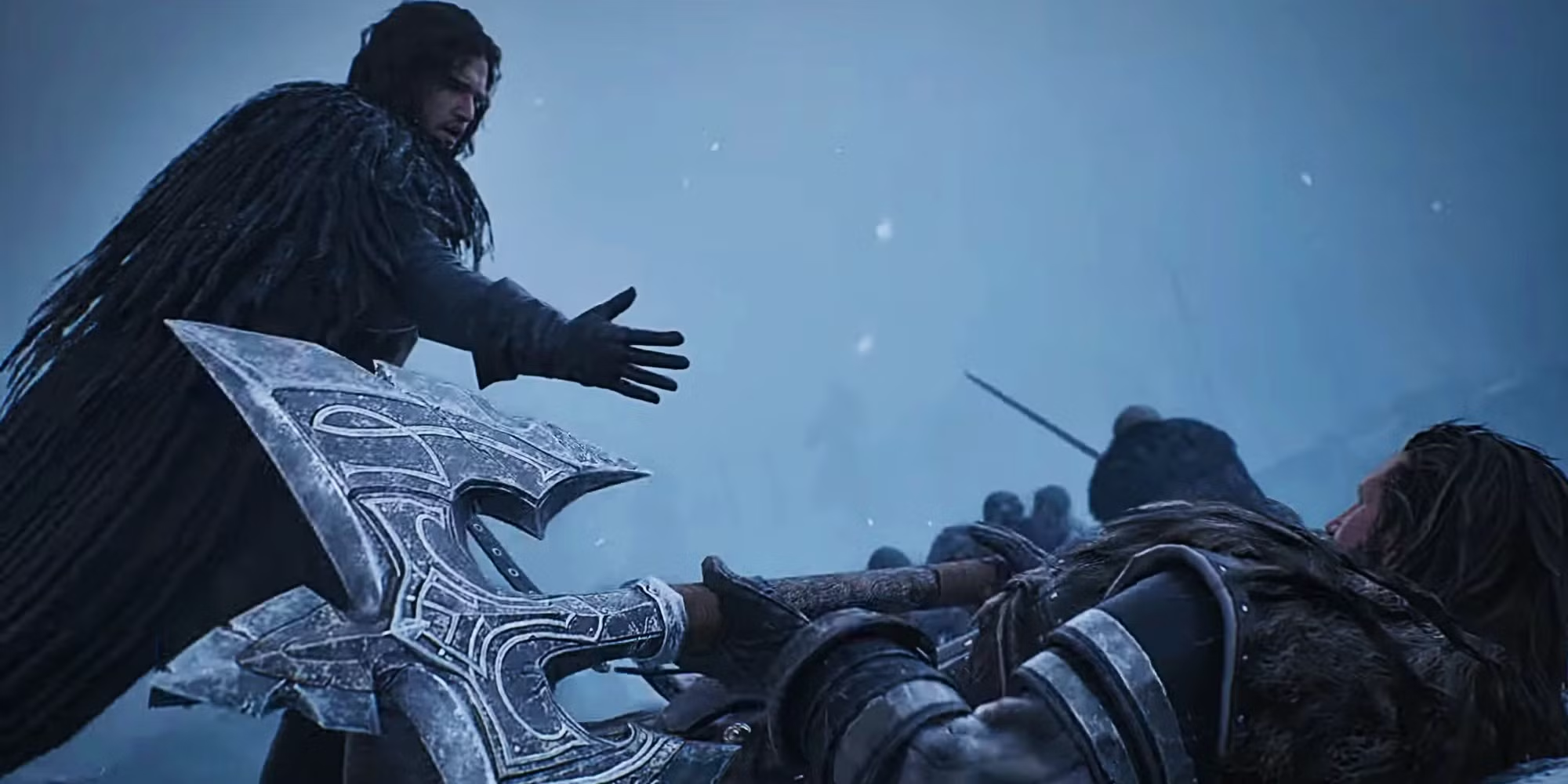In the first episode of the new series House of the Dragon, Queen Aemma’s baby is breech. Her husband, King Viserys, allows a fatal caesarean section to be performed while she is still conscious – it was expectedly gruesome, grisly and extremely gory.
In other words, everything you’d expect from a Game of Thrones prequel.
Yet it has caused outrage among viewers, and Tommy’s baby charity even gave a warning on Twitter, saying: ‘We’ve been made aware of a scene in Episode 1 of #HouseOfTheDragon which features a traumatic birth and baby loss.
‘We know this could be triggering if you’ve experienced loss or birth trauma. If you plan to watch and will be affected by this scene, you may want to skip it.
‘If you’ve already watched the episode and have experienced loss or birth trauma yourself we understand you might be struggling. We’re here for you.’
Now, I admit, that scene wasn’t an easy watch – my husband and I both averted our eyes for the worst bits and only dared to watch the rest through our fingers. And I can imagine if you have had a traumatic birth, it could be even harder to view.
But having had two caesarean sections – I feel it was entirely necessary.
For context, in the same episode, we also saw the City Watch, led by Viserys’s brother, Daemon, launch a horrific attack on the townspeople, dismembering and even castrating civilians.
There was the terrifyingly realistic jousting and subsequent violence and let’s not forget the naked prostitutes, often in the background or depicted as the mere playthings of men.
To be honest, the childbirth scene fit right in. Yet, it was the only scene people thought to complain about.
Anyone who has seen Game of Thrones will know to expect such bloody occurrences and even if you haven’t, there’s a pretty clear content warning before the episode starts.
Defending the controversial childbirth sequence, showrunner Miguel Sapochnik explained that the team had ‘made a point of showing it to as many women as possible’ and asking them if they found it ‘too violent’. The answer was, apparently, a unanimous no.
I’m not surprised.
Because we have to remember that, although this is fiction, set in a fantastical world hundreds of years ago, where healthcare was rudimentary at best, even now, childbirth isn’t a bloodless, neat-and-tidy affair.
Now to be clear, as someone who has had two c-sections – one emergency, one elective – I can categorically reassure anyone who is expecting one, it will be nothing like what you have witnessed in that episode. Nothing.
However, I feel by glossing over the reality of childbirth, it leaves women woefully under-prepared for what they may face. I certainly was.
When I first fell pregnant with Theo, my husband Tom and I, full of nerves and excitement, headed along to our local hospital for its ‘early pregnancy evening’. There, we listened to midwives and consultants wax lyrical about the merits of giving birth at home and in the birth pool.
Knowledge is power – and ignoring the various outcomes of a large number of labours is not empowering
I nodded happily along in ignorant agreement. I could imagine nothing nicer than warm water easing my contractions as I breathed my baby into the world. It would be a beautiful experience. I’d have as little medical intervention as possible – it was a natural process, why would I need it?
Except, at 22 weeks, I had a seizure in my sleep. A week and a half later, I had another. No-one seemed to know what to do with me. I was booked into a sleep clinic for December, two months after I was due to give birth.
It was only after my fourth seizure, when I woke up during it and bit my tongue in my panic, that my husband insisted we call 111, who sent an ambulance.
At my next midwife appointment, I was told in no uncertain terms that I wouldn’t be allowed anywhere near the birth pool. I cannot explain that feeling of desperation, as I explained frantically that I’d never had a seizure when I was awake and (cue hysterical laugh) I couldn’t imagine I’d be dropping off during my contractions.
She was having none of it. She also recommended that I stop the hypnobirthing course I’d started, as any kind of hypnosis isn’t advisable for epileptics.
I walked home sobbing. My dreams of a water birth – the best birth – were washed up and already, I felt like a failure to my unborn child. I hadn’t been prepared for this, or other options.
And when it came to it, I needed all the intervention they could give me. At 41 weeks, I was induced and, after 18 hours of permanent contractions, I eventually gave in and had an epidural. Categorically, the best decision of my life.
When my baby’s heart rate started to drop and I was still only ‘maybe’ six centimetres dilated, they decided he needed to come out there and then.
By then, I genuinely didn’t care. It was only as I was lying down in theatre, fully anaesthetised, that I realised that I, the most squeamish person in the world who felt dizzy when she scratched her finger, was about to have major surgery while I was awake. ‘Rachel,’ I suddenly said to the anaesthetist – I’d grown very close to her very quickly. ‘I’m scared.’
‘Why?’ she smiled. ‘He’s here.’ And just then, I heard a whimper. He was indeed here. It may not have been the birth I’d imagined or wanted, but none of that mattered. My baby had arrived and I was holding him.
Although the illusion was definitely tarnished, I thought, when I fell pregnant again, I could give my dream birth another go. I was on medication to control the seizures. Maybe this baby would arrive beautifully, magically.
So, Tom and I went to our GP surgery for a talk on labour in hope.
I left two hours later, furious. Because the whole time, midwives had made no mention of a forceps delivery, none of a ventouse delivery – and certainly nothing about a caesarean.
Here was another load of women who had been told that their labour would be textbook – and they had no preparation, from their midwife at least, if it was anything other.
Another set of women who would feel like failures if, for whatever reason, their labour didn’t progress perfectly.
Yes, of course, you don’t want to scare expectant mothers but knowledge is power – and ignoring the various outcomes of a large number of labours is not empowering.
In the end, I didn’t even try for a natural birth with my second child Immy. I decided to have another caesarean section and at 39 weeks, she arrived. Absolutely perfect.
So while the bloodbath of a birth scene only has its place – a rightful place – in House of the Dragon, pretending that childbirth is straightforward and seamless is a dangerous game.
And ignorance doesn’t benefit anyone.
Do you have a story you’d like to share? Get in touch by emailing jess.austin@metro.co.uk.
Share your views in the comments below.
MORE : Who are House Hightower in House of the Dragon and are they in Game of Thrones?




















![[Book Review] The Blade Itself (The First Law Trilogy) by Joe Abercrombie](https://bendthekneegot.com/wp-content/uploads/2018/01/1516047103_maxresdefault-218x150.jpg)


















